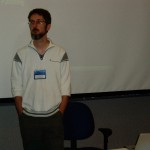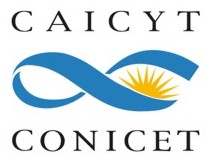New Forms and Forums: How Press Cooperatives are Launched and Why it’s a Good Thing: The Session Blog

Freire Project
(Source)
Presenters:
- Dr. Shirley Steinberg – McGill University. Director, The Paulo and Nita Freire International Project for Critical Pedagogy. Bio
- David Smith – Technical Manager, The Paulo and Nita Freire International Project for Critical Pedagogy. Bio
July 9, 2009, 4:00-pm-4:30 pm. SFU Harbour Centre. Rm 7000
Session Overview
Through McGIll University’s Paulo and Nita Freire International Project for Critical Pedagogy, Dr. Steinberg and Mr. Smith have worked to help other centres with similar interests publish open access scholarly work as well as create communication networks to take advantage of social networking and other less formal publishing opportunities.
Dr. Steinberg spoke about the creative aspects of going from a journal in one’s mind to actually creating an open access journal. She noted that when working with associations, if they already had a print journal then it was a relatively easy transition to an open access online journal. However, the challenge is much greater for groups that don’t have previous experience creating a journal.
Dr. Steinberg illustrated her talk with the example helping Australian educators with the creation of a new journal: antipodes: a journal of critical southern education. Similar to Canada, the Australian educators face considerable challenges based on the difficulty in physically getting people together to communicate. Additionally, their government insists on a strict hierarchically tiered referred journal system. In this case, Dr. Steinberg noted that they focused first on creating a network of critical educators before they concentrated on creating the journal. As a result of , in addition to the community having a focus on critical pedagogy, they also had the common goal of discussing new models for peer refereed journals.
Mr. Smith continued the talk with some of the more technical as well as social networking aspects of their project. He started by commenting on a number of inspiring aspect from John Willinsky’s keynote address. Mr Smith noted that the International Journal of Critical Pedagogy (IJCP) uses the Open Journal System (OJS). But he pointed out that the journal is difficult to find from the Centre’s website since they are struggling with the best way to present the link (conceptually) between them.
Furthermore, Mr. Smith commented that the centre’s site is still being developed and they are trying to make it a better tool to connect people. Mr. Smith commented that they would like the site to be more than just a repository for formal scholarly work (e.g. referred journal) and that they are interested in promoting less formal but still very valuable modes of communication as well (e.g. blogs, wikis, forums). As an example of the benefit of these social networking possibilities, Mr. Smith provided an anecdote about an educator from St. Lucia whom he has become familiar with through the Centre’s website.
Discussion and audience questions
- Dr. Steinberg responded to an audience question saying that if the local scholars were not already grounded in possible economic models for open access journals that she would help them work through various options.
- One audience member asked about the possibility of integrating Drupal with the OJS, and Mr. Smith answered that he is very enthusiastic about the possibilities of connecting the two.
- Dr. John Willinsky commented that these presentations reminded him that the importance is far greater than the journals only being free. He sees these examples as highlighting the importance of the networking and criticism opportunities that help to contribute to to creating a critical culture.
- Another audience member commented that that there appears to be a relationship between more people submitting to the open access journals and more them doing more reviewing. That is, they are reviewing more work than they were before.
Related Links
- The Paulo and Nita Freire International Project for Critical Pedagogy
- About Paulo Freire
- Critical Pedagogy
- The Public Knowledge Project Open Journal System (OJS)
- Drupal – Open Source Content Management Software
July 9, 2009 Comments Off on New Forms and Forums: How Press Cooperatives are Launched and Why it’s a Good Thing: The Session Blog
Customizing OJS for Magazine Publishers: The Session Blog
Presenter: John Maxwell
July 9, 2009 at12:00 noon

John Maxwell
Background
John Maxwell is currently with the Canadian Center for Studies in Publishing at Simon Fraser Universtiy in Vancouver, British Columbia. John’s work specifically focuses on the advantages of open journal system (OJS) software models to be used as a framework for the Online Magazine Management Models (OMMM) project that applies to use in the area of publishing small cultural magazines (Maxwell, 2008).
Session Overview
John Maxwell reported on the very recent initiatives of a new model for small magazine editorial publishing. The OMMM) project based its creation on the Open Journal Systems (OJS) with what Maxwell describes as a process with a more collaborative approach but at the same time keeps within the intent of the OJS overall concepts.
Small cultural magazines do not have the exact purpose of journal publishing but there are similarities to moving from text based publishing systems into online management systems. The OMMM project is not at a stage of online publishing but is using the OJS concepts and applying that process to the electronic management of submissions as a starting point.
With the specifics of the OJS, Maxwell’s work centers around taking some of the same ideas of OJS and applying those systems to fit into a version that would be streamlined for magazine publishing.
What the OMMM project essentially produced was a translation of user interface from OJS into a more user friendly language for magazine publishing. As the project evolved two models of editorial governance were designed:
- Discrete delegation of responsibilities
- Collaborative, task-based, process management
One of the key concerns while working on the OMMM project was to capture a workflow model that would capture the essence of a wide variety of small cultural magazines. Currently the project is using PLONE as the Web platform – designed as a “miniature OJS.” PLONE houses the Editorial Submission Management (EMS) that includes the following aspects:
- System of buckets for organizing content
- 3 stage workflow (red, yellow, green)
- Basic notification
- Word.doc – Web based content
- Relies on collaboration and trust among the editorial group
Although this new concept is in its infancy the concept of using OJS framework has moved the publishing of small scale magazines into the cyber world and has started a ground level development in the first steps toward newer developments of online publishing for the future.
Audience Input
The overall sense from those audience members who spoke – were complimentary to the project or any project that uses online open access; however, access to the technology remained the major issue for users of any place across the world….not just remote areas. There still remains key issues around access to the technology and infrastructure in order to access these online programs for the publishing and reading of open source knowledge.
References
Maxwell, J.W. (2008). OMMM Project: Toward a collaborative editorial workflow. Blog. Retrieved July 7, 2009, from http://thinkubator.ccsp.sfu.ca/wikis/ommm/OMMMProjectTowardACollaborativeEditorialWorkflow
Related Links
BC Association of Magazine Publishers
Workshop: Web Content Management for Publishers – August 4,5 and 6
July 9, 2009 2 Comments
Website for CONICET´s Academic Publications: the Session Blog
Presenter: Alberto Apollaro
July 9, 2009 at 4:00 pm
Background
Alberto Apollaro is a member of the Scientific Electronic Library Online (SciELO) Argentina group and is a specialist in webspace development and applications. Mr. Apollaro joined CAICYT-CONICET in 1998 as a systems website administrator, including serving as the webmaster for CONICET’s specific website for academic publication.
Session Overview
The SciELO project’s directive is based on “the development of a model methodology for the preparation, storage, sharing and evaluation of scientific publications as an electronic support.”(1) As an alternative to print, the library facilitates international distribution of Latin American scholarship with regional impact in an organized, accessible format. This regional project stems from National Council for Scientific and Technical Research (CONICET) policy, which in turn is administered by the independent, Argentinian Centre for Scientific and Technological Information (CAICyT).

Comisión Asesora de Investigación Científica y Técnica / Consejo Nacional de Investigaciones Científicas Y Técnicas
The CAICyT has charged the production a website which will allow Argentina systematically catalogue digitalized data that is editorialized and peer-reviewed as per the academic standards previously described by CONICET. Also, in part of CAICyt’s directive to push Argentinean scholarly publication into the open-access era, CONICET draws upon 15 university repositories to fuel 32 open-access e-journals. This initiative is facilitated by the use of the open-source Open Journal System (OJS) Software which allows online management of the process from submission through to publication.
The process began with journal selection from the Latindex, which contains over 2,800 titles. Editors were then invited as the website was constructed. CAICyT would provide the editors’ platform for discussion and consultation, while also providing publishers with guidelines for quality improvement . OJS allows the website to self-archive authors’ submissions and facilitate peer-reviewing and copy-editing quickly and efficiently.
The expectation is that the CONICET website will provide a repository and portal for local Argentinean scholarship, and allow publication not just limited to text but multimedia also. The streamlined editorial model allowed by OJS will hopefully encourage submission of regional scholarship and see it through to immediate publication, while operating under a more economically attractive model in comparison to traditional publication.
During the following discussion, Mr. Apollaro described the OJS is a very attractive mechanism to facilitate publication in Latin America (for the aforementioned reasons), but the problem lies in the current unfamiliarity shared amongst Argentinean scholars with OJS. This is essentially holding back the website’s growth, and progress of the Latin American open-access movement in general. Certainly, one of CONICET’s future efforts should be focusing on increasing open-access awareness in the Latin American scholarly community.
References
1) http://www.scielo.org.ar/scielo.php?script=sci_home&lng=en&nrm=iso
July 7, 2009 Comments Off on Website for CONICET´s Academic Publications: the Session Blog